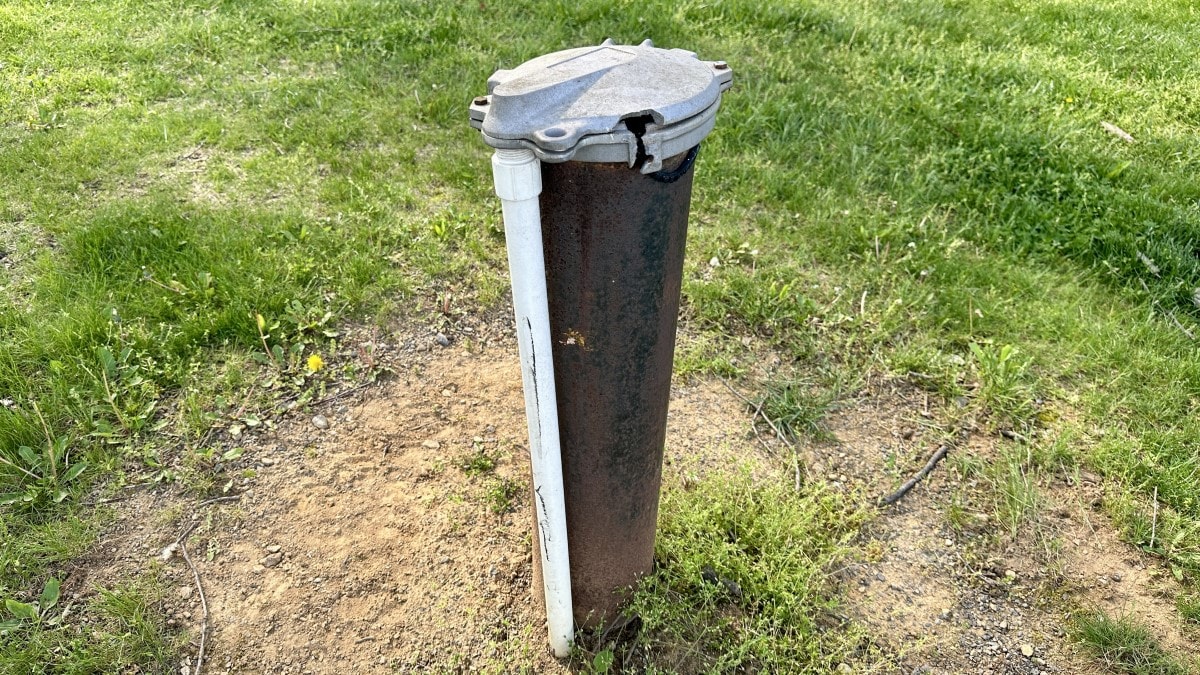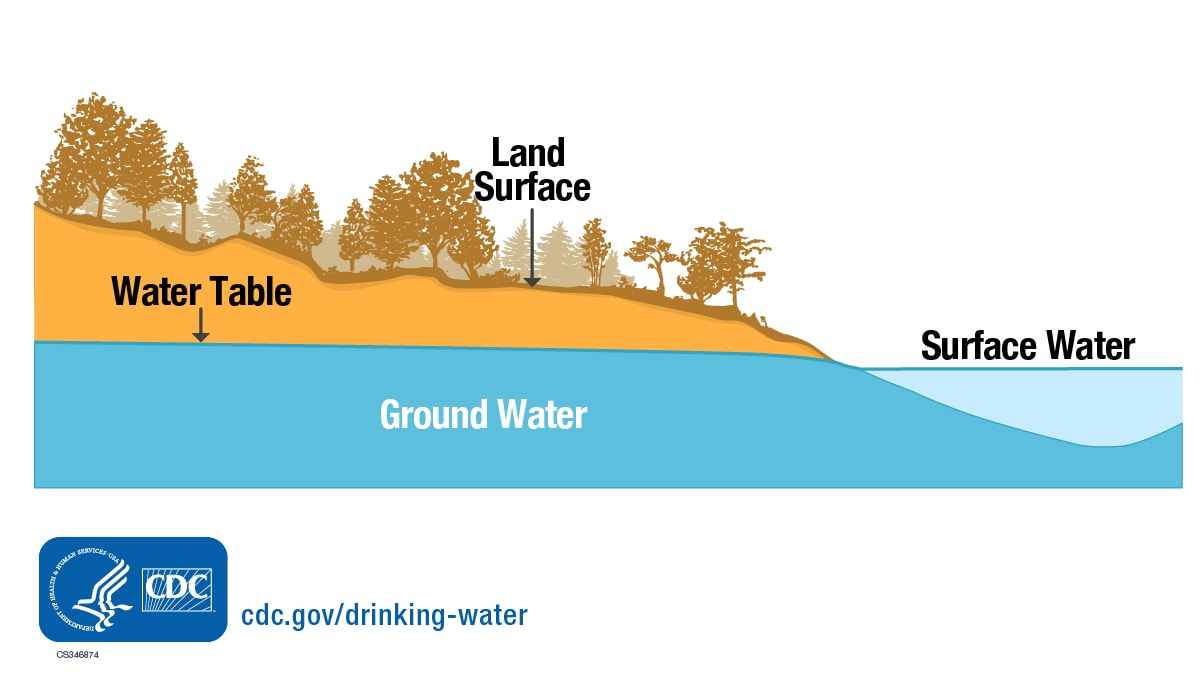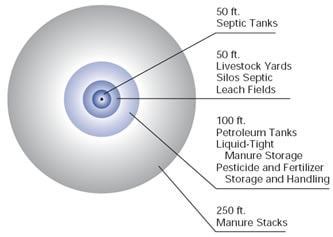Key points
- If you have a privately owned well, you are responsible for making sure your tap water is safe to drink.
- Proper well construction and continued maintenance help keep harmful germs and chemicals out of your well water.
- Contact your health department for advice about testing your water and maintaining your well.

How it works
When rain falls, much of it goes into the ground. Water that is not used by plants moves downward through spaces in the rock. Water moves down until it reaches a dense layer of rock. The water trapped below the ground in the spaces above the dense rock is called ground water or an aquifer. We pump ground water up through wells.

Types of wells
The main types of water wells are:
- Dug or bored wells
- Driven wells
- Drilled wells
Knowing what type of well you have can help you maintain your well and keep your water safe. Looking at the cover and outside (casing) of your well may help you determine the type of well it is.
It is generally easier to keep harmful germs and chemicals out of drilled wells compared to dug, bored, or driven wells.
Private wells are not regulated
Tap water from private wells is not regulated, treated, or monitored by officials. The regulations that protect public drinking water systems do not apply to privately owned wells. Therefore, you are responsible for making sure your private well water is safe to drink.
Take steps to keep your well water safe. You can also contact your health department for advice about well water safety.
Private well definition
Typically, a private well or water system is not regulated if it:
- Serves no more than 25 people at least 60 days of the year, and
- Has no more than 15 service connections (buildings it serves)
The risks
Drinking polluted well water can make you sick. Your symptoms will depend on what type of harmful germ or chemical is in the water.
Well water can become unsafe to drink and use if it gets polluted by:
- Leaks from landfills
- Septic systems that are not working correctly
- Leaks from underground fuel tanks
- Fertilizers or pesticides
- Water runoff from cities or industrial buildings
- High levels of naturally occurring chemicals, such as arsenic or radon, in the land around a well
- Poop from animal feedlots
Contact your health department for advice if you think your well water is polluted.
Steps to take
Proper well construction and continued maintenance help keep your well water safe.
Where to put your well
Locate your well a safe distance from possible sources of harmful germs and chemicals. Make sure your well is at least:
- 50 feet from septic tanks
- 50 feet from septic leach fields
- 50 feet from livestock yards
- 100 feet from petroleum tanks
- 100 feet from where liquid-tight manure is stored
- 100 feet from where fertilizer is stored or handled
- 250 feet from manure stacks

Maintaining your well
Regular maintenance is important to keep your well water safe. Get a well checkup every year, and test your water and check your well if you ever suspect a problem.
At least once each year:
- Test your well water for harmful germs and chemicals
- Check your well for mechanical problems and cleanliness
Even if you are not currently using your well, continue to maintain it if it might be used in the future.
Retiring your well
If you are no longer using your well, you must retire it by filling and properly sealing it. Retiring your old well helps protect ground water and neighboring wells from getting contaminated with germs or chemicals. People or animals can also get hurt if they fall into a forgotten, crumbling well.
Contact your local water quality or environmental protection department to learn what is required in your area to retire a well. In many states, well owners must document retired wells with these agencies.
Look for a well water systems contractor with the expertise and equipment to properly plug and seal the well you want to retire. For help finding a contractor, contact your local health department or environmental protection department. You can also check these resources:
Emergency situations
If your well is or may be contaminated with harmful germs or chemicals, do not drink the water. Contact your health department for specific advice. Drink bottled water or water from another safe source until you have treated and tested your well water.
Resources
Get more information about wells in your area by contacting:
- Your state's private drinking water well program
- Your health department
- The U.S. Environmental Protection Agency (EPA) Safe Drinking Water Hotline at (800) 426-4791
You can also find helpful information related to keeping your well water safe on the pages below:
- Private Drinking Water Wells | U.S. EPA
- Potential Well Water Contaminants and Their Impacts | U.S. EPA
- Water Well Resources | Wellowner.org
- Find a Well Water Service Contractor | Wellowner.org
- State-Certified Drinking Water Laboratories | U.S. EPA
- Septic System Care and Maintenance | U.S. EPA
- Old, Unused Water Wells | Wellowner.org
